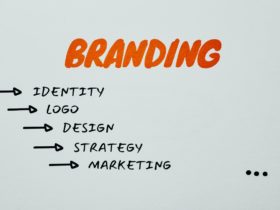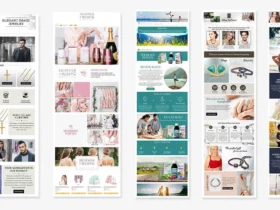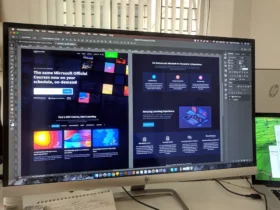Google “UI designer” and you may be even more perplexed. It doesn’t help that UI and UX are frequently conflated, making it difficult to tell them apart.
While the two are closely related, User Interface Design is a distinct subject.
While there is some overlap, UI design has its own set of requirements and hence requires a particular skill set.
What awaits you if you choose a profession in UI?
Maybe you’re already in the business and simply need clarification. We’ll put the record straight in this blog.
You can learn about UX design services in other articles on this blog.
UI Design in Brief
UX includes User Interface Design. While they both aim to create a great user experience, UI Design is a distinct step in the process.
Simply said, UI is how you interact with a product, whereas UX is how that interaction feels.
So, as we’ve previously talked extensively about the differences between UX and UI design, we’ll just discuss UI here.
UI Visual Design
UI design emphasizes the visual experience. An app, video game, or website, it influences how a user interacts with it.
It’s all about how the user moves from A to B visually. Imagine pressing a button or swiping.
A UI designer’s duty is to build all the visual elements—and their interaction properties—that allow a user to navigate between displays.
Aspects of UX Design
A talented UI artist also considers human behavior. A decent interface needs little user thinking. Consider your favorite app: it’s straightforward to use and easy to read. When you initially installed it, it was apparent how to move from A to B.
The UI designer is crucial. They consider the human user and the psyche. Patterns, space, and color are used to instruct the user.
Big Apple companies often hire this UX design agency in New York so they can maximize their target population. For instance, blue accents and ample white space are often used to create a sense of trust.
The important term is “intuitive”. The UI designer is a creative creature that anticipates the user’s expectations at each level. From there, they employ empathy to develop visual, interactive features that react naturally to the user.
Consider utilizing an app to find a new residence. You click on one listing to see the gallery. Full-screen picture labelled 1/5. You know there are more, so you swipe through the gallery. There were no instructions—you simply knew.
The UI designer does this. They create the app’s interface based on the user’s expectations.
In a nutshell, UX creates the map. The user interface then fleshes them out with visual, interactive touchpoints to guide them along their trip. Want to go further? Learn about Zero UI, a new approach to UI design that pushes beyond graphics.
Which UI designer abilities are required?
The talents UI designers need to succeed in the profession are much more varied than you may expect. Sure, a UI designer must be meticulous, but it takes more than that to be a UI designer. Soft skills are as vital as technical proficiency for UX designers working in a team.
The following are fundamental soft and hard abilities of any UI designer.
Soft skills
UI design must communicate. You must properly express the intended use of each piece you design to the developers.
Any UI designer’s position requires communication with clients and stakeholders.
Your design selections typically need detailed explanations and even justifications.
UI designers work with UX designers, web developers, stakeholders, and clients. Working as a team requires listening and problem-solving skills to get to the source of the issue.
UI designers should be able to take creative guidance as well as provide it. You tend to have the same aim, and collaboration makes the dream work!
Empathizing with users takes empathy. It’s critical to keep accessibility and diversity in mind while designing interfaces for all users. You won’t go far if you choose beauty above usefulness!
Skills
Even entry-level UI designers should be familiar with industry-standard design and prototype technologies like Sketch, Adobe XD, and InVision.
Getting to grips with one makes the others much simpler.
UI designers must comprehend the core methodologies, philosophies, and practices of UI design.
Color theory, typography, and UI design patterns are among the essential design methods that may help you better understand how consumers perceive and interpret your work.













